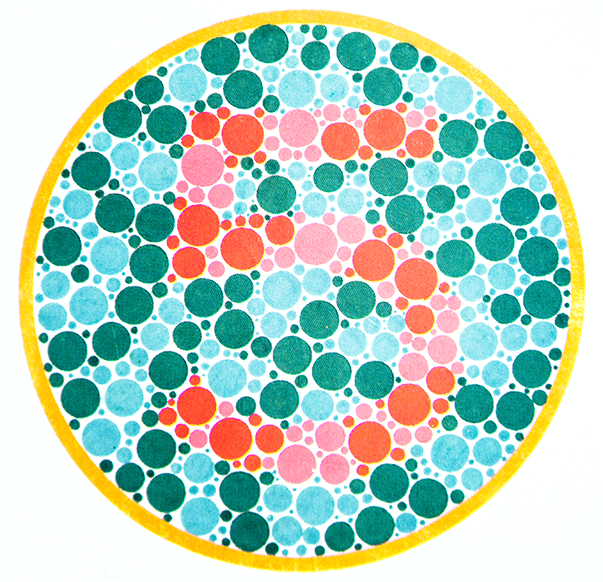Are You Colorblind?
When a person is colorblind, their brain is unable to process colors under every day, normal lighting conditions. Color blindness expresses itself as the inability to or the difficulty of identifying colors and the separation between them. Those who are colorblind struggle with differentiating between the colors they see.
How Our Eyes See Color
Several parts make up the human eye including the iris, cornea, lens, pupil, optic nerve and retina. Within the retina, there are millions of cells called retinal cone cells. These cells capture light and respond by telling the mind what the color is that you are looking at. Each cell is considered ‘color specific’. This means the cells see each color of light based on specific frequencies. Although there are millions of retinal cone cells, there are only three different types. Each type of cone cell is created to see one of the primary colors; blue, red, and green.
When the human eye sees an object, like a beautiful vibrant flower, the eye processes that color through the retina. A person who is not suffering from color blindness can see the distinction between red and green. An individual who suffers from color blindness won’t be able to identify the stem of the rose as green or the petals as red. Instead, they may see a dulled down version of the combination of colors.
The phrase ‘color blind’ can be slightly misleading. Many people who are afflicted by color blindness can see color. If you are wearing a red dress and you ask them what color it is they will most likely be able to tell you. So, they are not completely blind to color. However, they have a reduced ability to determine what a color is, especially if it’s more than one color and the colors are closely related. Test your color vision here.
Most Affected
Millions of people around the world suffer from color blindness. And, it is more prevalent in men than it is in women. Roughly one out of twelve men have color blindness and one out of two-hundred women is afflicted.
Color blindness is typically inherited genetically but can be acquired through trauma or the deterioration of the cone cells. The color inside of the human eye is carried on the X chromosome. This means every person can have colorblindness regardless of gender because both sexes have the X chromosome. Photopigments are the name of the genes that are passed down that play a part in the development of the eye color. And, when these are damaged or abnormal the result is color blindness.
Solutions to See The World
So far, science has not developed a permanent treatment for color blindness. The good news is the majority of people who suffer from colorblindness have mostly normal vision in all the other areas of eye health. Additionally, there are certain methods that can be applied to help those who are colorblind. Wearing a particular type of customized lens, based on the individual’s photopigment deficiency, will help to improve vision. The lens’ work by separating the greens and reds.
If you have questions about vision problems, contact Looking Glass Optical. Our team is here to answer all of your questions. Make an appointment today for a comprehensive eye exam.
Share
